The Prostate Cancer Story

Prostate Cancer - a creeping, aggressive, largely symptomless disease - is the most commonly diagnosed cancer in UK men.

There is hope, however.
Patients that live at least 10 years after diagnosis.

Between 1971 and 1975, just 21 per cent of patients lived for at least 10 years after diagnosis. In 2010-2011, that figure had more than quadrupled, to 84 per cent.
This dramatic rise in survival rates is the result of pioneering modern treatments, swifter diagnosis and the availability of essential funding. High-profile fundraising initiatives, such as Movember, have raised substantial sums for the research and development of new treatments.
While prostate cancer treatments, survival rates and diagnoses have come on in leaps and bounds with the advancement of medical prowess, awareness around the disease is still lacking. One of the reasons for this is the fact that not everyone is aware of the shocking facts and figures, which are themselves largely neglected by news outlets.

So, what do we know?

Number of men who will be diagnosed with prostate cancer at some point in their lives
40,000
UK men diagnosed with prostate cancer each year
10,000
UK men die from prostate cancer each year

The risk of developing prostate cancer increases with age.
Prostate cancer symptoms
While prostate cancer is largely symptomless, there are certain warning signs to look out for:
 |
Urinary issues, such as frequency, urgency, hesitancy or slow flow. |
 |
Blood in the urine or semen. |
 |
Trouble getting an erection. |
 |
Painful ejaculation. |
83%
According to YouGov (June 2014), 83% of men at an increased risk of prostate cancer don't grasp that their chance of developing the disease is higher.
75%
of men at a greater risk of prostate cancer admit that, even if they were aware of this but didn't have any symptoms, they wouldn't speak to their GP.
Average Age of Diagnosis

Testicular cancer
Prostate cancer
This may paint a rather grim picture of the state of prostate cancer in the UK, but rest assured, it's a far cry from what it used to be...
Prostate cancer treatment wasn't always what it is today. Short lifespans meant that cases of the disease were uncommon, by extension leaving medical knowledge lacking, medical advancement slow and treatment, very often, brutal.
However, with improvements in technology and research came the development of medication, alongside other treatments that have their roots in the early methods that now seem so alien.
EACH YEAR IN THE UK, AROUND 2,300 MEN ARE DIAGNOSED WITH TESTICULAR CANCER

Click on the dates below to find out more
- 1890sOrchidectomy
Orchidectomy - the surgical removal of the testes – is first performed. Effectively castration, the procedure worked by removing the source of the testosterone that cancer cells use as their main fuel. While orchidectomy had limited success back in the 1890s, it was still used as the 'gold standard' treatment for advanced prostate cancer as recently as the mid-1980s. It's even used today, albeit rarely.
- 1904Hugh H. Young
Hugh H. Young describes and performs the first ever method to remove the prostate, the radical perineal prostatectomy, at Johns Hopkins Hospital in Baltimore. The procedure involved making an incision between the anus and the scrotum, through which the prostate gland was removed. Young's patient was 70 years old – the average age of men suffering from prostate cancer – and found his symptoms much improved. Tragically, due to complications, he passed away eight months later.
- 1941Charles B. Huggins
Following studies conducted with prostate cancer patients, Charles B. Huggins publishes his famous paper concerning the effect of oestrogen and androgen injections on prostate cancer. Dubbed 'chemical castration', this method of testosterone termination helped Huggins win the 1966 Nobel Prize in Physiology and Medicine, despite it paling in comparison to the much safer, much more forgiving hormone therapies used today
- 1977Cisplatin
The first chemotherapy drug, a platinum derivative called cisplatin, is used to treat cancer patients. Inspired by the pioneering research carried out by Cancer Research UK's Tom Connors, the drug not only improved the treatment of conditions like prostate cancer, but completely revolutionised that of testicular cancer.
- 1983 Patrick Walsh
After refining radical retropubic prostatectomy, Patrick Walsh sees the procedure become a popular treatment for prostate cancer. It involved the surgical removal of the prostate and, if necessary, the lymph nodes, through an incision in the abdomen. While effective in many ways, radical retropubic prostatectomy is rarely used today, due to complications like impotence and incontinence.
- 2004 Brachytherapy
Brachytherapy, a form of internal radiotherapy, becomes widely-used to treat prostate cancer following the invention of transrectal ultrasound, which greatly improved volume estimates (and, therefore, brachytherapy dosage estimates) of the prostate. Brachytherapy involves implanting a number of tiny, radioactive seeds into the cancerous tumour – a higher dose of radiation, but minimal damage to surrounding tissue.
Present day
For all the winces, shudders and shock that some of these old treatments induce, it's safe to say that, without them, modern prostate cancer treatment wouldn't have evolved into what it is today – a holistic, multi-faceted approach tailored to every stage of the disease a patient could be diagnosed with.

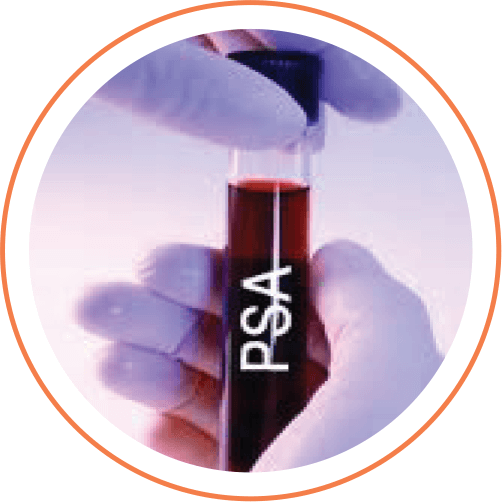
Active Surveillance
Active surveillance involves just that: active surveillance. Offered primarily to men who might not need radical, invasive treatment, this method uses regular PSA tests and biopsies to monitor cancer for signs of progression.
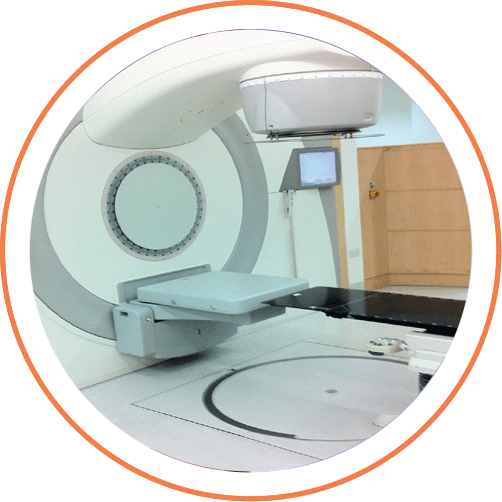
Radiotherapy
While brachytherapy is still used as an early stage cancer treatment, external radiotherapy is much more common. This method treats cancer cells by directing high energy x-rays into the tumour. These rays destroy the cancer cells, thereby halting or slowing tumour growth, with minimal damage to normal cells.

Hormone therapy
Prostate cancer cells are so aggressive because they have everything they need to multiply right in a man's body. They feed on testosterone, a readily available resource that can be controlled using hormone therapy. The drugs are delivered using injections, implants or anti-androgens, and by preventing testosterone from acting on the prostate cells, can keep cancer under control for a number of years.
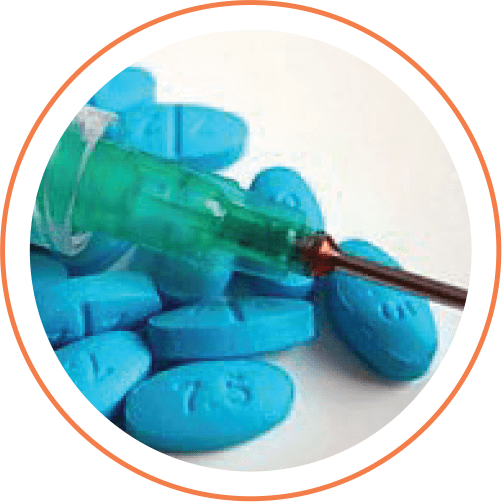
Steroids
Steroids are a less common alternative to hormone therapy, and are used if the latter, sadly, stops working. Steroids can shrink cancerous prostate tumours and stop them from growing, again keeping the cancer under control.
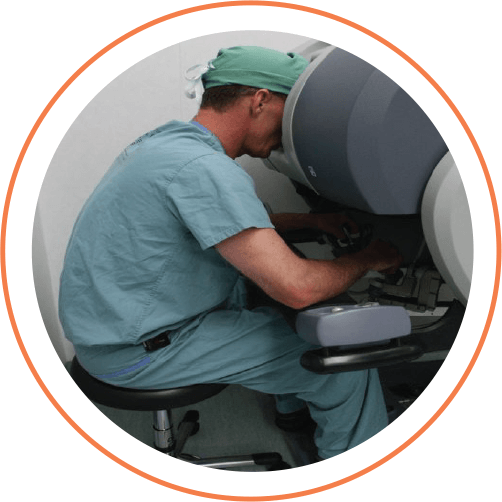
Radical prostatectomy
While radical prostatectomy has its roots firmly in the past, modern advancements mean that surgeons have perfected the procedure for safe use in cases of localised, isolated prostate cancer. As before, it involves the removal of the prostate gland through either perineal or retropubic prostatectomy, alongside a more modern, less invasive method – keyhole surgery. In many cases where cancer hasn't spread beyond the prostate gland, radical prostatectomy has cured it.
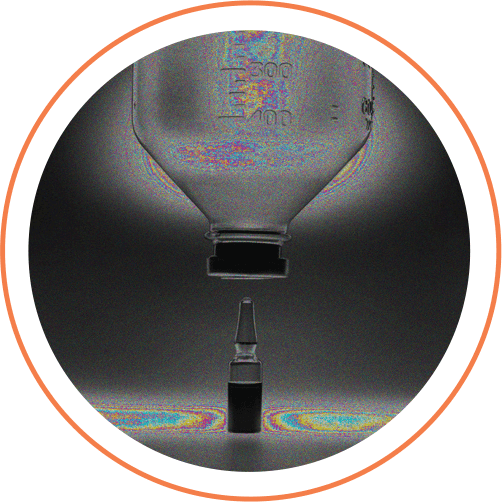
Chemotherapy
Chemotherapy is one of the most widely used treatments for prostate cancer, especially in advanced cases. The drugs destroy cancer cells by interfering with the way they multiply, keeping the disease and its symptoms under control. The most common chemotherapy drug is docetaxel (Taxotere), although cabazitaxel (Jevtana), mitoxantrone (Novantrone) and several others are also used.
What is PSA testing?
 |
The prostate-specific antigen test measures the level of PSA (a chemical produced by the prostate) in patients' blood – a raised PSA level is often indicative of an issue with the prostate. All men aged over 50 are entitled to a free PSA test on the NHS. |
Testicular cancer treatments
Modern testicular cancer treatments are largely similar to modern prostate cancer treatments, consisting of:
 |
Orchidectomy (removal of the affected testicle) |
 |
Radiotherapy |
 |
Chemotherapy |
It is down to constantly evolving research and tireless fine-tuning that these treatments have become so effective, and dramatically improved the survival rates of millions of prostate cancer sufferers.
THE RISE OF THE SURVIVORS
It's hard to believe that just fifty years ago, the average survival rate for men with prostate cancer was a mere one or two years. Diagnosis came too late, treatment was lacking, and patients slowly slipped away.
Thankfully, we live in an age where prostate cancer patients have access to a range of diagnostic tests and effective treatments, and as a result, are surviving for much, much longer. The latest figures (dated 2005 – 2009) even show a dramatic increase on rates from as recently as 1975!

Prostate Cancer Survival Rates

Testicular cancer now has a 95% cure rate.

One of these survivors is Kevin Thorpe, a Benenden member who, thanks to a swift diagnosis and quickly implemented treatment, now has many more years ahead of him.
All men aged over 50 are entitled to a free PSA test on the NHS.
KEVIN'S STORY
Kevin's story starts with a visit to his GP. After experiencing a urinary problem, he was referred to a specialist and underwent a TURP operation, where it was discovered that he had prostate cancer. Here, Kevin talks about his experience of diagnosis and life-saving treatment, and how he isn't sure whether he'd be here today if it wasn't for Benenden's help.
DISCOVERIES THROUGH THE AGES
Prostate cancer patients like Kevin are lucky enough to have over a hundred years of research on their side, while even testicular cancer patients are benefitting from a rapid rise in discoveries. If it wasn't for the continued findings uncovered by scientists and specialists, who knows where we'd be today?

Click on the our timeline below to find out more
Prostate cancer
Testicular cancer
- 1853 London Hospital
During a routine histological examination, J. Adams, a surgeon at the London Hospital, first identifies prostate cancer. Nowadays, it's hard to believe that he called it "a very rare disease."
- 1896 Marie Curie
Antoine Henri Becquerel, Marie Curie and Pierre Curie discover radioactivity. Their findings not only won the group the Nobel Prize for Physics in 1903, but paved the way for the first brachytherapy treatments in 1901.
- 1939 Charles B. Huggins
After reading an 1896 study about the effect of oestrogen on breast cancer, Charles B. Huggins treats men with prostate cancer with hormones. He saw a decrease in acid phosphatase levels, laying the foundations for the introduction of hormone therapy.
- 1943 Yale
Yale pharmacologists, Alfred Gilman and Louis Goodman, discover that nitrogen mustard creates a marked regression in the tumours of lymphoma patients. Although the following remissions turned out to be short-lived, the nitrogen mustard years marked the dawn of chemotherapy."
- 1945 Terrence Millin
Terrence Millin develops an alternative to radical perineal prostatectomy – the radical retropubic prostatectomy. Not only was this approach easier to learn, but it gave access to the pelvic lymph nodes, areas prone to taking on cancer from the prostate.
- 1960 Actinomycin D
Doctors discover that the combination of the drugs actinomycin D, chlorambucil and methotrexate can cause tumours to shrink in up to half of patients whose disease has spread. These drugs formed the first effective treatment regime for men with testicular cancer.
- 1970 Vinblastine
Physicians find that, when combined with existing treatments, the clinically trialled drugs vinblastine and mithramycin bring 10 – 20 per cent of advanced cancer patients into remission.
- 1977 Cisplatin
In a landmark trial, it is discovered that a combination of the drugs cisplatin, vinblastine and bleomycin provides full remission for 70 per cent of patients with advanced testicular cancer. So impressive was the result, that cisplatin is still used to treat testicular cancer today.
- 1977 Andrzej W. Schally
Andrzej W. Schally and Roger Guillemin uncover the role of the gonadotropin-releasing hormone (GnRH). Without this Nobel Prize winning discovery, testosterone reducing GnRH receptor agonists like leuprolide may never have been developed for hormone therapy.
- Early 1980s Blood
Researchers discover that certain proteins in the blood can help them to detect tumours, track a patient's response to chemotherapy, and therefore determine how aggressive each sufferer's treatment should be.
- 1990 Lymph nodes
Lymph nodes are identified as the place where testicular cancer is most likely to spread, leading surgeons to develop a new surgical technique called 'nerve-sparing'. It allowed for the removal of the cancerous testicle without compromising key nerves and tissue that could render men unable to ejaculate.
- 2004 Carboplatin
A European study shows that, following the removal of the infected testicle, a single dose of the drug carboplatin reduces the risk of cancer recurrence. This, in turn, spared many men the radiation therapy that could induce cancer elsewhere in later life.
- 2009 Genetic code
Studies reveal a set of genetic code variants that triple the chances of a man contracting prostate cancer. They identified nine risk areas, as well as at least two genes that could be targeted with new treatments.
- 2010 Basal cell
Scientists discover that the basal cell in the prostate may be the most likely 'site of origin' of prostate cancer. After implanting viruses known to cause cancerous mutation into samples of basal and luminal cells, they saw the basal cells mutate into cancerous tumours, while the luminal cells experienced no malignancy.
- 2010 Androgens
Research finds that male hormones (androgens) play a key role in encouraging a specific genetic mutation that fuels tumour growth – a significant step forward for the development of new, more targeted treatments.
- Feb 2014 Gene defects
Scientists isolate 13 gene defects that could be used to identify men who are more at risk of developing prostate cancer, giving hope for the development of cancer screening.
- June 2014 Enzalutamide
A clinical trial of a new hormone therapy pill (enzalutamide) finds that, by blocking male hormone activity, it can improve survival rates and delay the need for aggressive chemotherapy.
- Sept 2014 Blood test
A new blood test is developed that detects instances where prostate cancer treatment has stopped working. Research began after scientists discovered that a steroid given to 90 per cent of cancer patients could actually speed up tumour growth.
- Sept 2014 Targeted genetic testing
Scientists identify up to 100 genes that, when combined, can raise the risk of prostate cancer sixfold – a discovery that could mark the development of targeted genetic testing.
- April 2015 Chemoimmunotherapy
Scientists discover that chemoimmunotherapy – a therapy which boosts the immune system and improves the effects of chemotherapy – all but wipes out previously treatment-resistant prostate cancer in mice.
- Aug 2015 Five subtypes
Through genomic profiling, researchers identify five subtypes of prostate cancer with distinct DNA signatures. The hope is to develop targeted treatment.
- April 2015 Medical detection dogs
Following a study in which dogs detected prostate cancer in the urine of 93 per cent of cases, ‘medical detection dogs’ are approved for use in a trial by the NHS.
A survey discovers that while one third of men admit to spending almost an hour grooming themselves each day, the same number never bother to check their testicles.
To learn how to regularly check yourself, visit https://prostatecanceruk.org/prostate-information/prostate-tests
Prostate cancer discoveries in particular advanced at an astonishing rate in 2014, giving hope to not just millions of prostate cancer patients, but the one in eight men at risk of developing the disease.
However, none of this could have been achieved without the essential funding now invested in cancer research.
WHO FUNDS THE RESEARCH?
Just as in days gone by, funding for prostate cancer research is largely provided by the government, with the Department of Health declaring they had invested £104 million into cancer research in 2012. Nowadays though, research also has an additional source of funding – charities.
Using generous donations from the public, prostate cancer charities are able to fund vital research programmes and support services, and even create new initiatives. Admittedly, there is significantly less support given to prostate cancer than other cancers, but three charities in particular are fighting to make this a thing of the past.


£123
MILLION
invested in prostate cancer research
Founded in 1996 as the Prostate Cancer Charity, Prostate Cancer UK is leading the way in funding vital research into prostate cancer tests, treatments and causes. To date, the charity has invested more than £123 million into prostate cancer research, and launched a research strategy in which it awarded more than £2.3 million of pilot awards and project grants. Prostate Cancer UK also launched the pioneering Movember Centres of Excellence, bringing together leading researchers specialising in different scientific disciplines to tackle the unanswered questions surrounding prostate cancer.

£20.4
MILLION
raised in 2013 alone
Movember has become one of the most recognisable charities associated with prostate cancer. It was formed in 2004 as a simple awareness idea, by 30 Australian men who decided to cultivate a moustache throughout the month of November. The concept quickly went global, and saw the original Movember-30 form what is now the Movember Foundation. Despite very humble beginnings, the charity succeeded in raising £20.4 million in 2013 alone, with £15 million going to Prostate Cancer UK's research and community support initiatives.

FUNDING SIGNIFICANT MILESTONES
in prostate cancer research
Cancer Research UK was formed in 2002, following the merger of the Cancer Research Campaign and the Imperial Cancer Research Fund. While allocating funding to a wide range of cancers, it still reserves a significant investment for prostate cancer, allowing its researchers to make astonishing headway. Their findings have underpinned numerous prostate cancer treatments, and marked significant milestones in our understanding of the disease.
WHAT DOES THE FUTURE HOLD?
It may have taken more than 100 years for our understanding of prostate cancer to get to where it is today, but our knowledge only continues to grow. There is no denying that awareness around prostate cancer falls drastically short of the level it should reach, but with the help of charities, fundraisers, celebrities and scientists, it is most certainly growing.

So much so, in fact, that the future for men who have, or are at risk of prostate cancer is underpinned by hope. If recent discoveries are acted upon with continually advancing research techniques, there is a likelihood that targeted genetic testing could be made available to at-risk men, prostate cancer can be detected at the earliest possible stage, and unsuccessful treatments identified and altered as soon as possible. One day, we may even discover a cure for prostate cancer, but until then, why not do your bit to help?
From raising awareness of the disease by telling loved ones about the shocking facts and statistics, to raising money by completing a sporting event (or, indeed, growing a moustache for Movember), every little act helps to strengthen the fight against prostate cancer.




